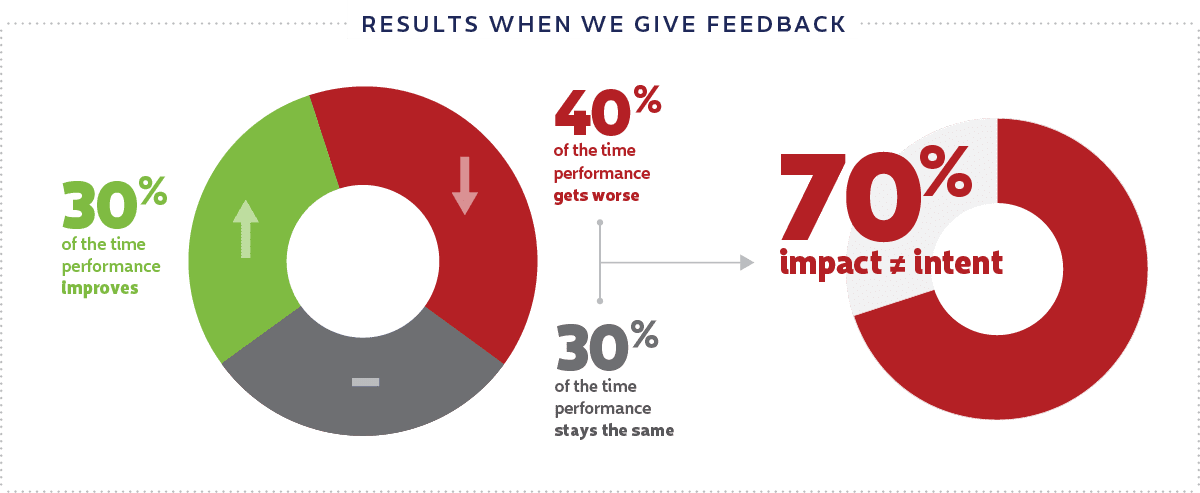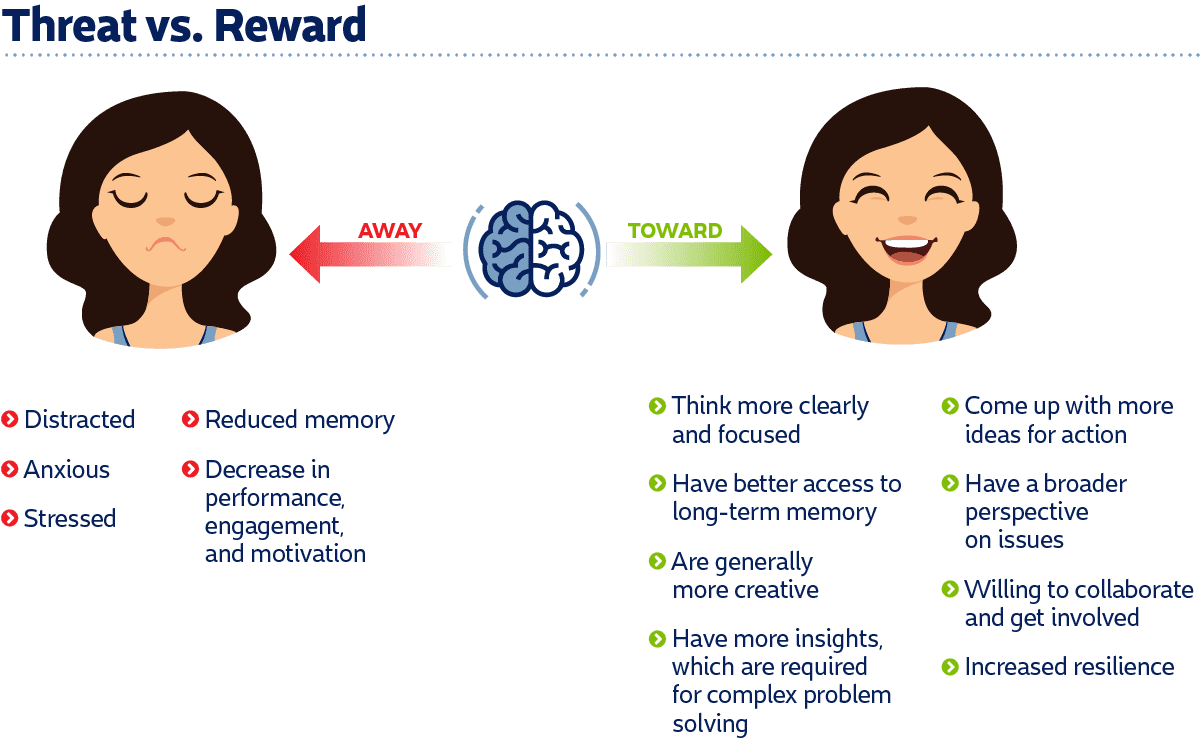This Is Your Brain On Feedback: How Understanding a Little Brain Science Can Make a Big Difference in Your Next Feedback Conversation
It’s that time of year when many managers and leaders are gearing up for performance reviews – and when the idea of giving or receiving anything less than positive feedback can send both participants into a pit of anxiety. While feedback conversations are intended to improve performance, research by Columbia University neuroscientist Kevin Ochsner shows that giving feedback only succeeds at improving performance 30% of the time. The rest of the time performance either remains the same or gets worse. That means that 70% of the time, feedback is not having its intended impact!

Feedback conversations don’t have to be painful and ineffective. Even when you have tough feedback to deliver, you can do it in a way that is well-received by your employees. It all comes down to understanding how our brains react to threats. When you make feedback less threatening and more rewarding, you increase your chances of it being received in a more positive way.
Thanks to advances in the emerging field of NeuroLeadership, which focuses on how neuroscience can be applied to leadership development and performance improvement, leaders have greater opportunities to improve efficiency in organizations by understanding more about how the brain works.
Your brain on feedback
The fundamental organizing principle of the brain is a “minimize danger, maximize reward” function that is designed to keep us safe from anything perceived as a threat. When we feel threatened, we shut down, and that’s what happens when we’re given feedback in an ineffective way. The more we understand how our brain works and reacts to the world around us, the better we can be at delivering feedback.
The amygdala is the key part of our brain that receives information through our senses and translates these into emotions. This is where our “fight or flight” response happens; the response that determines if we are in danger, which then signals a reaction in the brain and body to keep us away from that threat. When our brain perceives a threat, our amygdala is “hijacked” in order to avoid that threat — leading to reduced analytical thinking, creative insight, and problem-solving. Giving feedback the wrong way can send the receiver into a threat response, where they can’t properly internalize or respond to the feedback you’re giving them.

A brain-based approach to improving feedback conversations
The popular SCARF model, created by David Rock, points to five key factors that can trigger a threat or reward response: status, certainty, autonomy, relatedness, and fairness. For example, if feedback is being delivered in a way that feels unfair or makes the person receiving feedback feel uncertain, this can trigger a threat response. However, if you ensure the feedback being given to your employee is fair and delivered in a way that allows them to feel open and comfortable receiving it, you can avoid triggering their threat response.
Considering these five key factors can help you understand what about your current way of delivering feedback might be putting your team into threat mode. This table offers tangible tips on how to avoid things that trigger threat mode and how to improve the way you give feedback in the future:
How your feedback style may be creating a threat response
- Giving advice or instructions
- Letting employees know when they are unsuccessful at a task
- Saying, “Can I give you some feedback?”
- Showing superiority over employee
- Putting employee in an unfamiliar situations or giving them an unfamiliar task
- Too much uncertainty in your delivery
- When you tell them blatantly what they shouldn’t do
- Making employees feel that they have no choice or can’t execute on their own decisions
- Not creating connection or trust
- Not showing care or empathy
- Not helping the employee to feel like they’re a valuable part of the team and company
- Treating employees differently
- Focusing solely on the negative
- Not being as transparent as possible
How you can improve the way you give feedback
- Let employees know that you’re a resource for them
- Sit on the same side of the table
- Get out of your office to have the conversation
- Recognize areas of improvement that you have noticed
- Explain reasoning for decisions and be specific on objectives
- Focus attention on what to do, rather than what not to do
- Cover the agenda of the conversation before diving in
- Make sure it’s a good time for them to have the conversation
- Find a way to create choices and options wherever possible
- Share your own challenges that you have worked to overcome
- Help the employee also see what they are doing right
- Focus on actionable “task” level feedback
- Make conversation first and make a connection
- Treat each employee as consistently as possible
- Remain objective
- Recognize achievements at an equal or greater rate
- Be open and transparent
